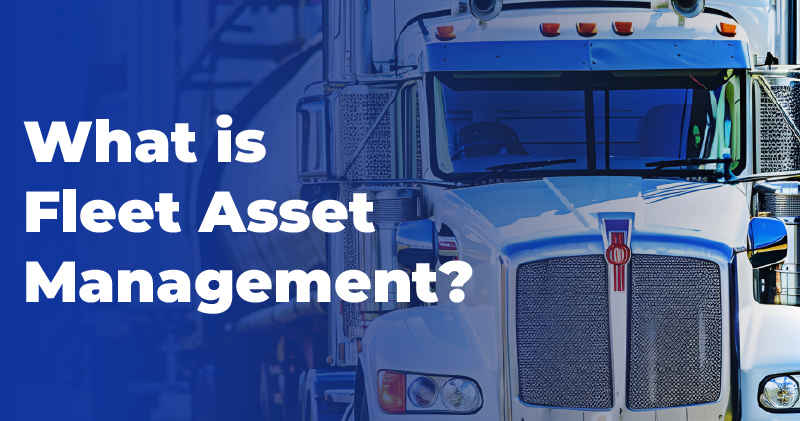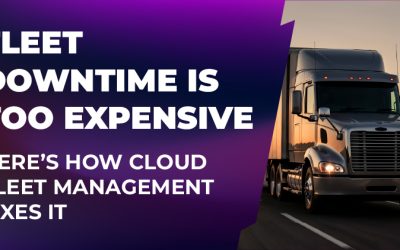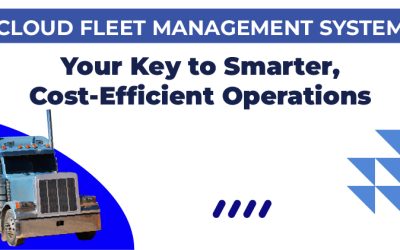
What is Fleet Asset Management
Fleet asset management plays a critical role in ensuring that organizations running large fleets can balance cost, efficiency, and operational effectiveness. For businesses that rely on vehicles to transport goods, deliver services, or support other operations, managing these assets is essential to maintaining profitability and achieving strategic goals. This process involves careful planning, monitoring, and optimization of a fleet’s performance while reducing operational costs.
In this article, we will explore what is fleet asset management, how it works, what strategies fleet managers can employ to cut costs, and how modern technology plays a pivotal role in improving efficiency in high-volume fleet operations.
Key Principles of Fleet Asset Management
Optimizing Resource Utilization
The primary goal of fleet asset management is to ensure each vehicle is used efficiently. This means assigning the right vehicles for specific tasks and making sure no vehicle is idle when it can be productive. Overused vehicles suffer from wear and tear, while underutilized ones waste valuable resources. By analyzing vehicle utilization, fleet managers can identify inefficiencies and adjust operations accordingly.
Reducing Operational Costs
Cost reduction is a constant focus in fleet management. Fleet managers look for ways to cut costs without compromising on quality or performance. This can involve strategies like optimizing fuel use, scheduling preventive maintenance, and ensuring the fleet size is balanced to meet demand without incurring extra expenses. Regular data analysis and performance reviews are key to finding opportunities for savings.
Strategies to Improve Efficiency
Efficiency improvements in fleet operations can be achieved by adopting better fuel management, implementing preventive maintenance, and upgrading technology. For example, using GPS systems helps drivers find the most efficient routes, saving both time and fuel. Additionally, tracking vehicle performance in real-time with telematics provides fleet managers with actionable data to optimize their operations.
 Identifying Areas to Cut Trucking Costs
Identifying Areas to Cut Trucking Costs
In high-volume fleets, identifying areas where costs can be reduced is crucial to maintaining profitability. A data-driven approach can help fleet managers analyze fuel consumption, maintenance costs, and vehicle utilization to spot inefficiencies. One effective method is developing Key Performance Indicators (KPIs) to measure fleet performance, enabling managers to focus on the most cost-effective solutions.
Preventive Maintenance
Preventive maintenance is another essential cost-saving measure. By regularly inspecting and maintaining vehicles based on their usage patterns, fleet managers can avoid costly breakdowns and extend the life of their assets. A well-maintained fleet runs more efficiently and requires fewer emergency repairs, reducing downtime and overall costs.
Improving Fuel Economy in Fleet Operations
Fuel costs often represent a significant portion of a fleet’s expenses. Improving fuel economy is one of the most effective ways to reduce operating costs, especially in high-volume fleets.
Driver Training and Best Practices
Training drivers to adopt fuel-efficient practices can lead to immediate savings. Simple habits like smooth acceleration, avoiding idling, and maintaining a consistent speed can improve fuel efficiency. In addition, using high-quality fuel and maintaining optimal tire pressure are small but effective measures that help improve fuel economy.
Exploring Alternative Fuel Sources
Fleets can also explore alternative fuels such as biodiesel or electric vehicles to reduce both fuel costs and their carbon footprint. Though the initial investment in alternative-fuel vehicles might be higher, the long-term benefits often include lower operating costs and a reduced environmental impact.
Upgrading Fleet Management Technology
Investing in modern fleet management technology is essential to maintaining operational efficiency. Tools such as GPS navigation systems and telematics provide real-time insights into vehicle performance, allowing fleet managers to make informed decisions that boost efficiency. Automated reporting systems streamline processes and ensure that fleet operations stay compliant with regulatory requirements.
Benefits of Telematics
Telematics systems, in particular, have become indispensable for fleet managers. These systems provide data on fuel consumption, driver behavior, and vehicle health, which can be used to optimize routes and improve fuel efficiency. By leveraging real-time data, fleet managers can proactively address performance issues, reduce costs, and enhance overall productivity.
Conclusion: Why Invest in Fleet Management Solutions
Effective fleet asset management requires a combination of strategies, from preventive maintenance to upgrading technology and training drivers in fuel-efficient practices. With a strong focus on reducing costs and improving efficiency, fleet managers can ensure their operations are running at peak performance.
Companies looking to enhance their fleet operations should also consider advanced solutions like TMS-Digital, a comprehensive fleet management software that offers tools for real-time monitoring, route optimization, and automated reporting. By investing in platforms like TMS-Digital, fleet managers can gain valuable insights and take control of their operations to achieve greater efficiency and cost savings.









